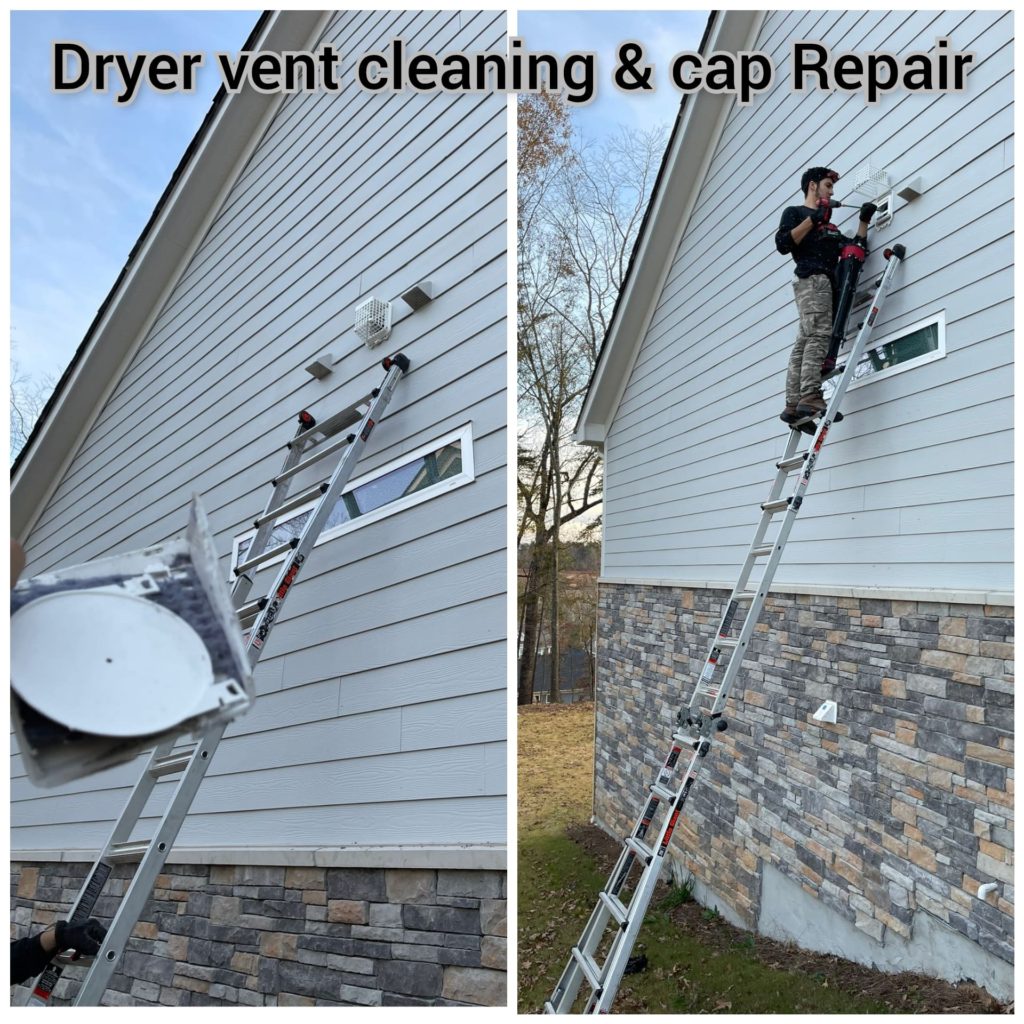After completion of the drying cycle, you may see condensation in the dryer drum because there may be some moisture in dryer vent. Improper venting can cause moisture and dirt to build in the dryer’s exhaust pipe duct and spill back into the dryer after it turns off, resulting in condensation.
Reasons For the Moisture in Dryer Vent
Dryer Generates Moisture, Hot Air Emissions
The moisture produced by your dryer is normal, as hot air interacts with damp items in the drum. But it eventually drains out through the exhaust system. A blockage in the exhaust system can cause moisture to build up in the vent. Moreover, it can also flow back into the dryer. Cleaning your dryer’s exhaust system regularly is one technique to protect it from creating moisture.
Cleaning the complete exhaust system once every one or two years is recommended by MMI Home Improvement. You can get HVAC cleaning Norcross service to be safe. However, you can clean it more frequently if you use your dryer regularly. If you’re not sure how to do this, consult your dryer’s instructions. Alternatively, you can buy an exhaust system cleaning kit.
At the end of each drying cycle, empty the lint filter in your dryer. If the screen becomes clogged, additional lint will enter the exhaust system, potentially clogging it.

Improper Ducting Materials
The duct material may lead to the formation of condensation in your dryer. When compared to metal ductwork, polyester ductwork is more vulnerable to moisture. Moisture in dryer vent or a plastic duct interacts with lint in the air to form a sticky paste that prevents air circulation. The paste eventually obstructs the airflow, allowing moisture to enter the dryer. Replace the plastic ductwork with heavy-duty metal ducting. To avoid moisture getting stuck in the ribs of a metal duct, consider one without ribbing.
The Ductwork isn’t Straight or Well-Supported
If a dryer’s duct isn’t straight or doesn’t have a good support, it will produce moisture while it’s operating, resulting in poor air circulation.
If the ducting bends or folds, airflow is restricted in certain regions, making a blockage more likely. Examine any curves in the duct, either by cutting it or rearranging it. Instead of using bolts to keep it in place, use aluminum foil tape. Screws can trap moisture, causing condensation to gather within the duct and drain into the dryer.
Hot Air Doesn’t Dissipate in long Ducts As Quickly As It Should
Because it takes a dryer longer to evacuate moist, heated air through a long duct, the dryer is more likely to accumulate moisture. To ensure that the dryer’s exhaust is correctly releasing the air, the vent duct shouldn’t be longer than 25 feet. However, a duct’s maximum length is 25 feet; decreasing the duct length improves airflow and reduces moisture. When reducing it, keep the vent straight and horizontal to help with the airflow. You should avoid curves in the duct whenever possible. If the duct is near, at, or longer than 25 feet, seek advice from a dryer vent specialist. He might suggest installing a blower fan to enhance air circulation and lessen the likelihood of discovering the moisture in the dryer vent.
Maintain Your Home Safety
Cleaning out all the dryer lint filters of your dryer is one of the most important things you can do to keep your house safe. Allowing lint to gather in the tray can lead to lint building in the exhaust vent itself. It can also retain moisture, which promotes mold growth. The greatest risk of not cleaning the lint trap and vent on a regular basis is that lint is highly flammable. If it comes into contact with the dryer’s heating element, it can quickly ignite and cause a home fire.
According to FEMA, dryers are responsible for around 13,820 fires and $233 million in damage to property in the United States each year. Because of its great flammability, people use lint frequently for camping or bonfires to ignite fires. A single spark can swiftly move through the lint, and the vent, resulting in a major fire in a short period of time. Get dryer vent cleaning Norcross service on time to prevent any major loss.
There are several precautions you can take to protect yourself and substantially lessen the possibility of a dryer fire in your house.
Clean the Lint Trap
Although cleaning the lint trap after each load is a straightforward chore, there are a few points to keep in mind. Generally, cleaning the lint is as easy as sliding the tray out of its slot. Then, you can drag the lint through the wire mesh with your fingertips.
However, if the mesh itself appears to be clogged, this could result from dryer sheet leftovers. To remove the detergent accumulation caught in the screen, use warm water, soap, and a wire brush.
Other Tips
Even if the clothes or rags have been washed, never put them in the dryer if they have been drenched in motor oil, gasoline, or other flammable materials. Allowing your dryer to run when no one is home is a bad idea. Keep flammable substances and liquids away from the dryer, such as paper, lint, or even stacks of clothes.
